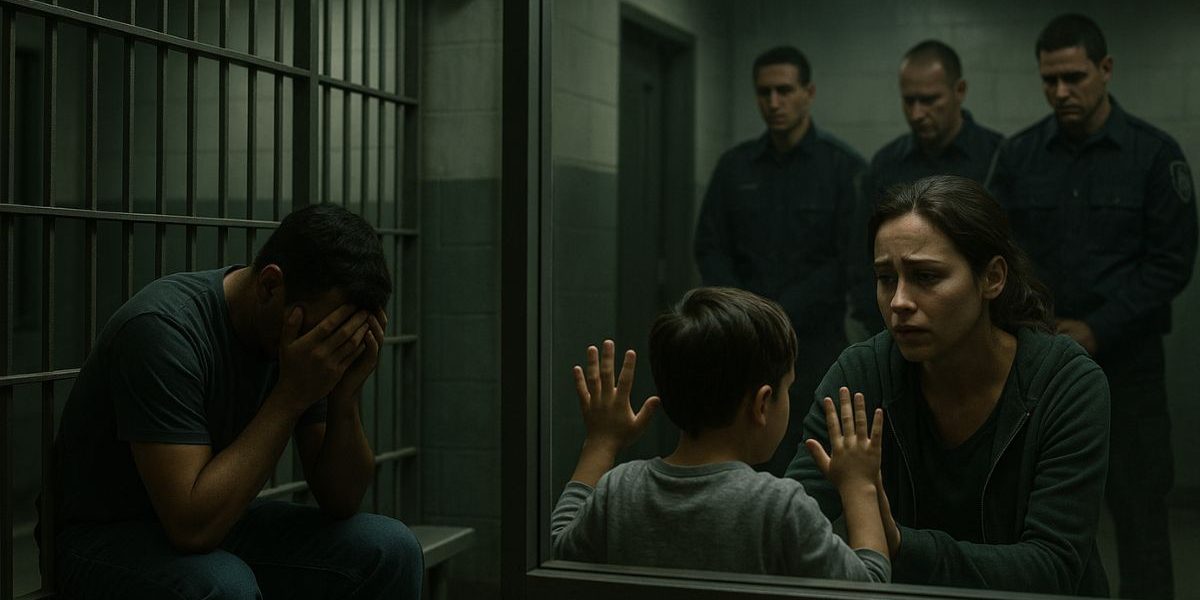People cross borders for many reasons. Some flee conflict, others look for economic stability or reunite with loved ones. But no matter the reason, once detained, they often find themselves in environments that leave lasting scars—mental, emotional, and sometimes physical.
Immigration detention isn’t just a legal process. It’s an experience that disrupts families, isolates individuals, and exposes people to stress and uncertainty. And while policy discussions often focus on security, enforcement, or numbers, it’s easy to forget that at the center of every case is a person.
What This Article Covers
This post looks at the real-life impact of immigration detention on people. It addresses the emotional burden, the effects on families, and the long-term harm that often continues long after someone is released. You’ll also get a sense of how detention practices differ around the world and what changes some experts and advocates have suggested to protect human dignity.
Emotional and Psychological Strain
Detention centers aren’t designed for healing. For many, they feel more like prisons. People report feelings of hopelessness, confusion, and anxiety. Some are detained without knowing how long they’ll be held. This uncertainty can trigger depression, insomnia, and even post-traumatic stress.
Language barriers and lack of legal representation can deepen the isolation. Being separated from children or spouses adds another layer of emotional weight, especially for parents who fear for the welfare of their families.
These centers may offer basic services, but they’re often not equipped to support trauma survivors, people with disabilities, or those with chronic health conditions.
Financial Fallout and Family Separation
When someone is detained, their entire household can be affected. Children may lose a caregiver. A working parent might no longer be able to support the family. Legal fees and costs of communication, like phone calls from detention, can quickly add up.
Some families are forced to choose between hiring a lawyer or paying rent. In communities where immigration enforcement is visible, even the threat of detention creates stress and uncertainty.
The ripple effect extends into communities—affecting schools, workplaces, and neighborhood support networks.
Legal Limbo and Lack of Due Process
Not every country guarantees a right to legal counsel in immigration cases. Many detained individuals must represent themselves in complex hearings. Without legal advice, even those with valid claims can face deportation.
Access to hearings can be delayed. Some detainees wait months to have their cases heard. Remote locations or lack of transportation also limit the ability of family members or legal representatives to visit or support detainees.
The process often feels one-sided. People are held for administrative reasons, not because they’ve committed a crime. Yet the conditions they face can resemble criminal incarceration.
Children in Detention
One of the most debated aspects of immigration policy is the detention of minors. Studies have shown that even short stays can affect a child’s development. They may struggle with trust, experience sleep problems, or withdraw from loved ones.
In many countries, children are held with their parents. In others, they’re placed in shelters or separated. Either option can create trauma.
These experiences may not disappear when a child is released. They can surface later in school, during adolescence, or in relationships. Some children stop speaking their native language. Others avoid talking about their past entirely.
What happens in detention doesn’t stay there. It leaves marks that shape how children see themselves and the world. The stress of confinement can blur a child’s sense of safety and belonging. For some, it builds walls of silence or mistrust that take years to break down. And when systems overlook these effects, children carry burdens they never chose—often without the help they need to heal.
Alternatives That Prioritize Wellbeing
Several countries have introduced community-based programs as an alternative to detention. These models often include case management, legal guidance, and regular check-ins rather than physical confinement.
Such approaches have shown that people comply with legal processes without needing to be locked up. They also reduce public spending while allowing families to stay together.
While no system is perfect, many believe that detention should be used only as a last resort—not a default step in immigration enforcement.
How Policy Shapes Human Experience
Policies aren’t just paperwork. They affect whether a child sleeps next to a parent or in a cell. Whether someone can fight their case or is deported without being heard.
The people most affected by detention often have little say in the systems that govern them. They may not vote. They may not speak the language. But they carry the weight of policies every day.
Public awareness, reporting, and advocacy play a role in changing these systems. Real stories have the power to shape how policymakers and the public think about detention and its effects.
Community organizations, legal aid groups, and volunteers often step in where policy falls short. They provide support, connection, and sometimes a lifeline. Their efforts highlight the human side of what can otherwise become a numbers game—reminding us that behind every case is a person with a name, a family, and a future.
A Shared Responsibility
People move across borders for all kinds of reasons, and any country faced with this reality must decide how to manage it. But safety, dignity, and fairness don’t need to be sacrificed.
Detention is one tool among many. It shouldn’t define a system. When governments, communities, and legal systems focus only on control, the result is pain that stretches far beyond detention walls.
Listening to those directly affected is one place to start. Policy should reflect not just what a country wants to prevent, but what kind of society it hopes to build.
